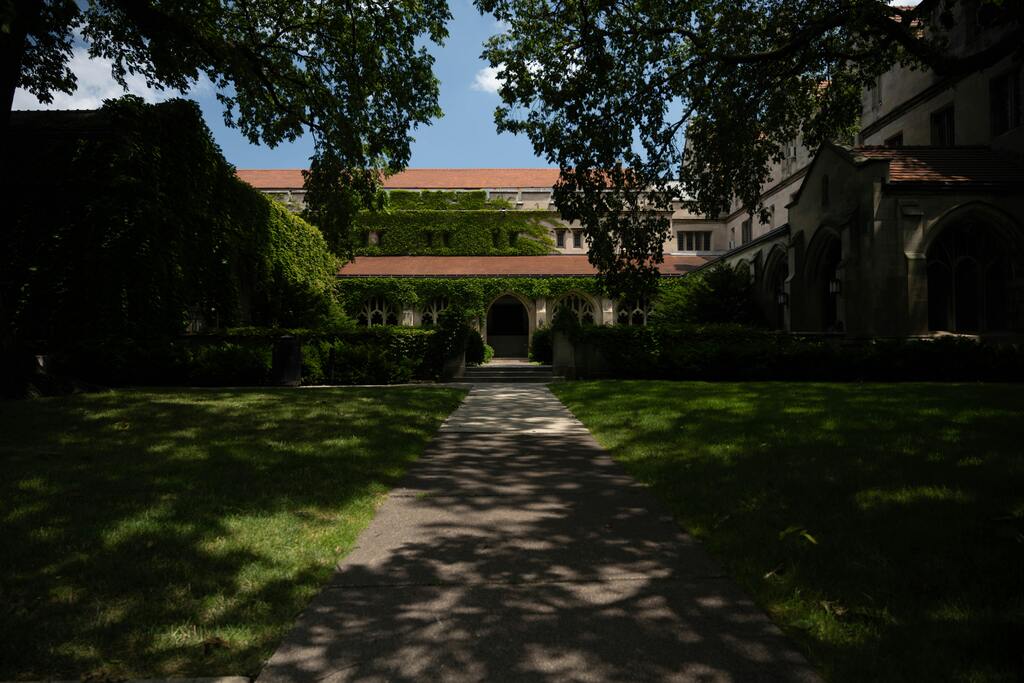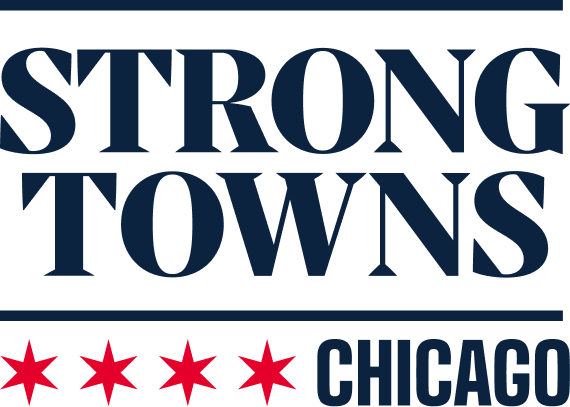
The Courtyard Block Solution to Chicago's Family Flight Problem
To stop the flight of young families to the suburbs, Chicago must build Euro-style courtyard blocks, starting with the USPS site on the 2500 block of W. Lawrence Ave.
Chicago’s Family Flight Problem
A recent analysis of census data shows that the number of young families in large urban metros is in a freefall, with the under-5 population falling by 15% in Cook County since 2020.1 Yes, some of the decline is due to lower fertility since 2020. However, birth rates in urban counties are declining at twice the rate that they are in rural counties. In the famously family-friendly Lincoln Square neighborhood of Chicago, between 2010-2022, the under-5 population fell by over 1,300 despite gains in total population and housing units.2
Why are cities losing children? The cost increase of SFHs outpaces the increase of other housing types, suggesting that an unmet demand for family-sized housing in the city is pushing young millennials to the suburbs.3 Without abundant family-sized housing, cities cannot compete with the suburbs, which have seemingly limitless capacity to expand to accommodate growing families and their tax dollars. This is a problem for families, who lose access to the conveniences and opportunities that are concentrated in cities. It is also a problem for Chicago, which loses these families’ spending power, productivity, tax dollars, as well as its connection to the next generation of citizens who will grow up in the suburbs, alienated from urban culture and values.
The Courtyard Block Solution
To compete with the suburbs, American cities should try an urban typology that has kept families in European city centers for millennia. With traditional courtyard urbanism, wall-to-wall buildings frame a city block so that the interior courtyard is closed off to the streets. The buildings are mid rise, usually 4-6 stories tall, and are built to the property line, so there is little to no setback. Because the buildings are high and wall-to-wall, the interior courtyards are safe and sound-insulated. By providing residents convenient access to car-free green space where children can play safely, courtyard blocks are ideal for families.
Families also benefit from the walkability that arises from dense, mixed-use courtyard urbanism. The parent who needs to pick up groceries, a coffee, an antibiotic for a sick child, or a six pack, can run down the stairs to the bodega, pharmacy, and cafe on the ground floor**. By collocating business and residential life, courtyard block** neighborhoods are the most walkable and least car-dependent urban areas. They are also the greenest: their walkability and density leads to greater energy efficiency and lower per capita carbon emissions when compared to mono-zoned, car-dependent areas.
A Courtyard for the 2500 block of W. Lawrence
In the July housing statement, the Biden-Harris administration called on federal agencies, including the USPS, to repurpose federal property for housing where appropriate. 4 The 2500 block of W. Lawrence, which currently sites a single-story 1979 USPS office and abundant surface parking, is an ideal site to do a “proof of concept” for repurposing government land as courtyard blocks. In this plan, the 160’x270’ site would become a 5-story courtyard block with a downsized USPS office tucked into the ground floor commercial space/parking deck. The courtyard and floors 1-4 would sit on top of the parking/commercial podium.
With parking, USPS office, and other retail on the ground floor, and assuming 5% of the building space in floors 1-4 will go to utilities/common, the remaining 127,984 sq ft of program space for floors 1-4 could allow for 25 jumbo units (3,000 sq ft), 20 medium units (2,000 sq ft), and 10 small units (1,000 sq ft).
The 2500 W. Lawrence Ave. Courtyard Block would transform the neighborhood and potentially serve as a model for Chicago and North America of how to do green, family-friendly density in our cities. For the 2500 block of W. Lawrence, this plan would increase the number of housing units from 0 to 55. It would add 45 family-sized units to the neighborhood in the form of spacious condos that provide access to safe green space in the courtyard interior. It would offer great potential for affordable housing in the smaller units. It would reduce car-dependency in Lincoln Square. It would eliminate an industrial-looking USPS eyesore that is out of place in the freshly street-scaped Lawrence Ave. It would increase property tax revenue: if the jumbo units are $700-900k, the medium are $500-600k, and the small units are $400-500k, the projected property tax revenue would be $750k-$1M yearly.
Finally, the 2500 W. Lawrence Ave. Courtyard Block has its roots in community-driven planning and development. Last week, members of the Greater Rockwell Organization voted to support this plan. This week, GRO members will present this plan to the office of US Congressman Mike Quigley, whose support will be needed to authorize the redevelopment of the USPS site. We hope that Congressman Quigley will give his enthusiastic support to this new “CIMBY” (courtyard in my backyard) project!
Footnotes
-
O’Brien, Connor. “Young Families Have Continued Leaving Big Cities Post-Pandemic.” Economic Innovation Group, 10 July 2024, https://eig.org/families-exodus/. ↩
-
According to census data, between 2010 and 2022, the Lincoln Square zip code 60625 increased its total population (76,815 to 80,296) and its number of housing units (32,255 to 32,831), but saw declines in its number of children under five (6,396 to 5,035). ↩
-
Thompson, Derek. “The Urban Family Exodus Is a Warning for Progressives.” The Atlantic, 5 Aug. 2024, https://www.theatlantic.com/ideas/archive/2024/08/the-urban-family-exodus-is-a-warning-for-progressives/679350/. ↩
-
House, The White. “FACT SHEET: President Biden Announces Major New Actions to Lower Housing Costs by Limiting Rent Increases and Building More Homes.” The White House, 16 July 2024, https://www.whitehouse.gov/briefing-room/statements-releases/2024/07/16/fact-sheet-president-biden-announces-major-new-actions-to-lower-housing-costs-by-limiting-rent-increases-and-building-more-homes/. ↩
